Top 16 Most Beautiful Mosques in Iran
Being an Islamic country, there are a number of mosques and holy shrines in Iran.
Generally speaking, the architecture of mosques in Iran is a combination of symmetry, geometric designs, and vibrant colors creating an astonishing view that no one can forget easily
Iranian architecture dates back to 5000 BC and had a tremendous impact on the architecture of India, Turkey, and Tajikistan. The architecture of the mosques in Iran varies from one region to another, due to geometric structures, materials, and styles specific to each location. These mosques often have very complex structures in which color variations, tiles, and symbolic designs are used. Here are the 16 most beautiful mosques in Iran you have to visit when traveling to Iran.
Top 16 Most Beautiful Mosques in Iran
- Nasir Al-Molk Mosque, Shiraz
- Sheikh Lotfollah Mosque, Isfahan
- Shah Cheragh Mosque, Shiraz
- Shah Mosque, Isfahan
- Sheikh Safi al-Din Khanegah Ardabil
- Jameh Mosque, Yazd
- Blue Mosque, Tabriz
- Gohar Shad Mosque, Mashhad
- Agha Bozorg Mosque, Kashan
- Vakil Mosque, Shiraz
- Jameh Mosque, Isfahan
- Imam Reza Shrine, Mashhad
- Fatemeh Masumeh Shrine, Qom
- Imam Mosque, Urmia
- Imamzadeh Ja'far, Qom
- Atiq Mosque, Shiraz
1. Nasir Al-Molk Mosque, Shiraz
This is probably the first image coming to your mind when we talk about Iranian mosques. It is also known as Pink mosque, because of pink color tiles for its interior design. When standing outside the mosque, you cannot guess what waits for you inside. Just step in and see the magic of light and color.
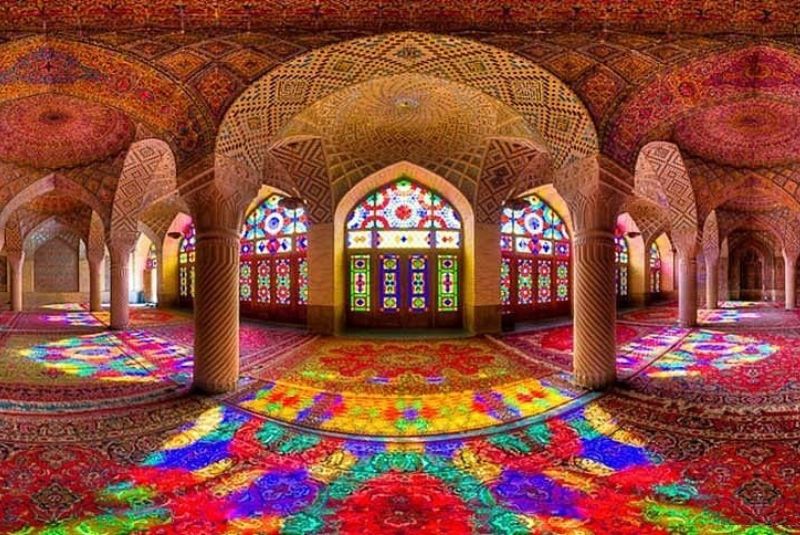
The mosque was constructed during the Qajar era, over the course of 12 years during the late 1800s, but restoration and maintenance efforts continue today. The mosque was built by the order of Mirza Hasan Ali Nasir Al-Molk, and it is designed by Mohammad Hasan-e Memar.
| Discover: Vank Cathedral | Persian & Armenian Cultural Masterpiece
2. Sheikh Lotfollah Mosque, Isfahan
The Sheikh-Lotfollah Mosque is a stunning example of intricate Iranian architecture, standing strong since 1619. The design of the building itself is rather simple, but the tile work makes it well worth the visit. The dome is without a doubt the focal point of attention with its arabesque designs that become smaller as they approach the center. The mosque's dome is covered in vivid colored tiles inside and out, but our favorite view is the hypnotic blue and yellow patterns on the inside of the dome.
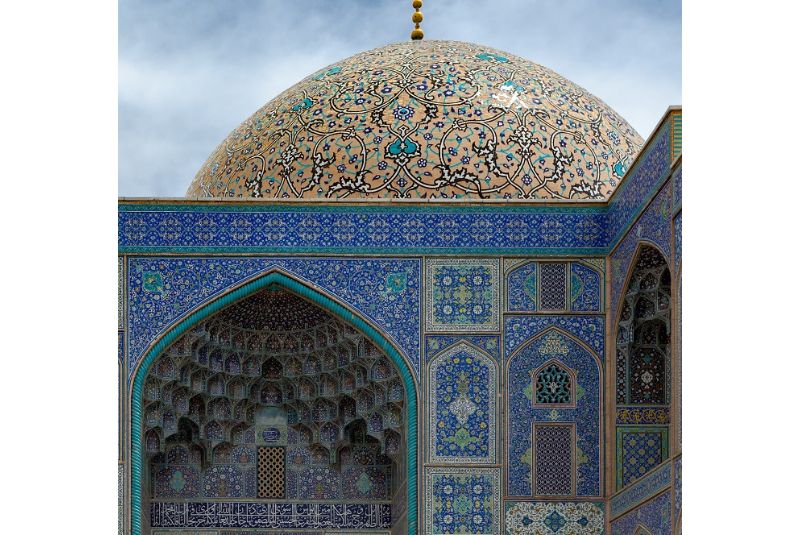
Sheikh Lotfollah Mosque is best recognized for its defiantly off-center dome and lack of minarets. The cream-hued tiles shift colors as the sun moves throughout the day, giving them a pinkish tint at times.
| Related: Isfahan Mosques You Should Visit
3. Shah Cheragh Mosque, Shiraz

Shah Cheragh is a mausoleum and mosque, which is one of the most important pilgrimage sites in ran. The mausoleum attracts millions of tourists on an annual basis. Looking at the monument from the outside, it seems like an ordinary mosque with a tomb and two minarets, but what makes it so different and valuable is the breathtaking interior design, with millions of small mirrors and glass pieces covering the walls and ceiling of the temple. Therefore, Shah Cheragh Mausoleum is known as the magnificent mirrored mosque in Shiraz. It’s no wonder the name of this mirrored mosque translates to “King of Light.”
4. Shah Mosque, Isfahan
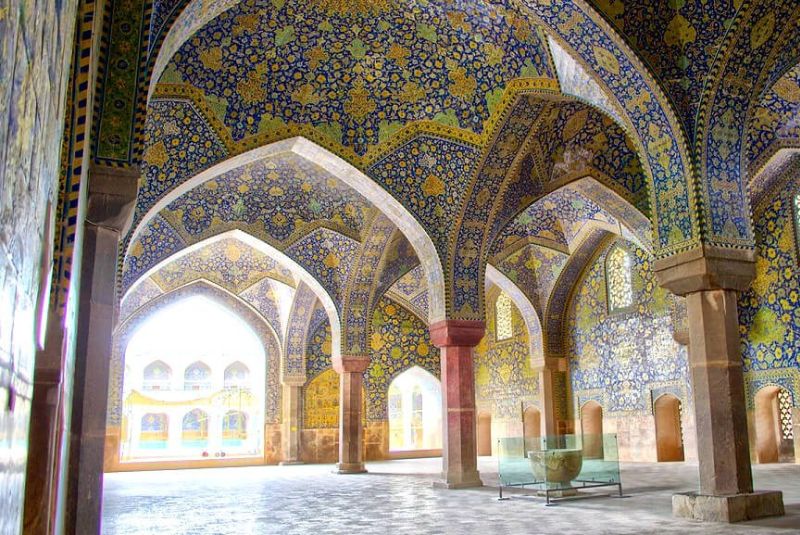
The Shah Mosque, also known as Imam mosque, is situated on the southern side of one of the most beautiful squares in Iran; Naghshe Jahan Square. The mosque is an excellent example of Islamic architecture in the country which has been listed as a World Heritage Site by UNESCO along with other monuments at the square.
The mosque dates back to the 1600s. It's made of mosaic tiles of seven different colors and is considered as one of the most stunning examples of Iranian architecture. It has four towering minarets, 18 million bricks and hundreds of thousands of tiles. The ornamental entrance of the building is packed with colorful mosaic tiles and elaborate inscriptions.
5. Sheikh Safi al-Din Khanegah and Shrine Ensemble, Ardabil
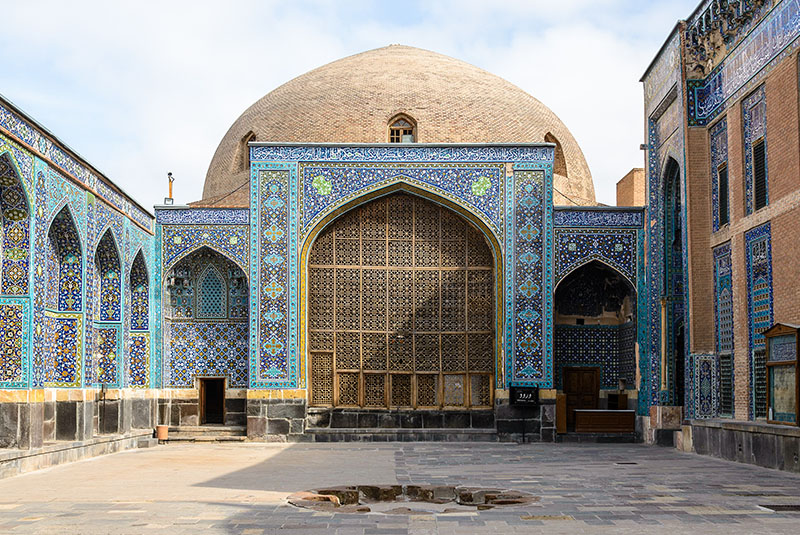
In 2010, Sheikh Safi al-Din Khanegah was listed by UNESCO as a World Heritage Site. Constructed between the 16th and 18th centuries, it includes a fusion of Sufi and Iranian traditional construction as well as representations of the seven stages and eight attitudes of Sufi mysticism in its architecture. The tomb of Sheikh Safi is constructed as an octagon, and the dome known as "Allah, Allah" is placed on top of it.
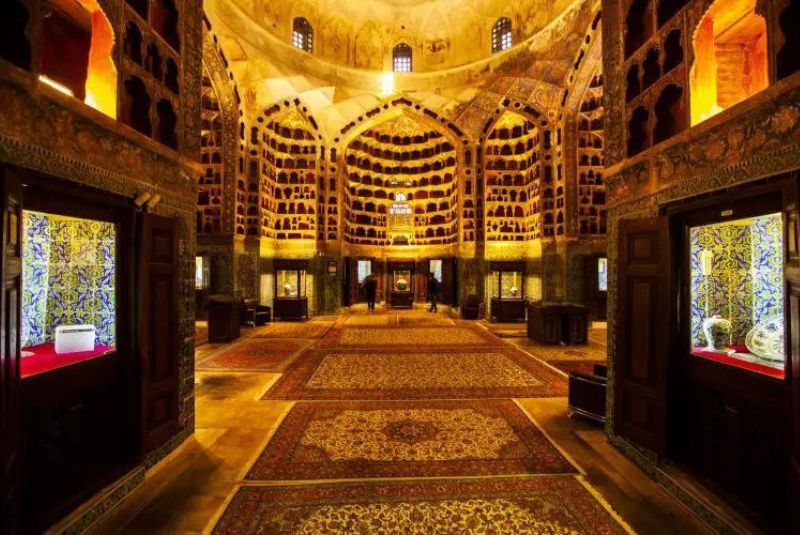
The most important parts of this collection are the main entrance door, a mosque, the
6. Jameh Mosque, Yazd
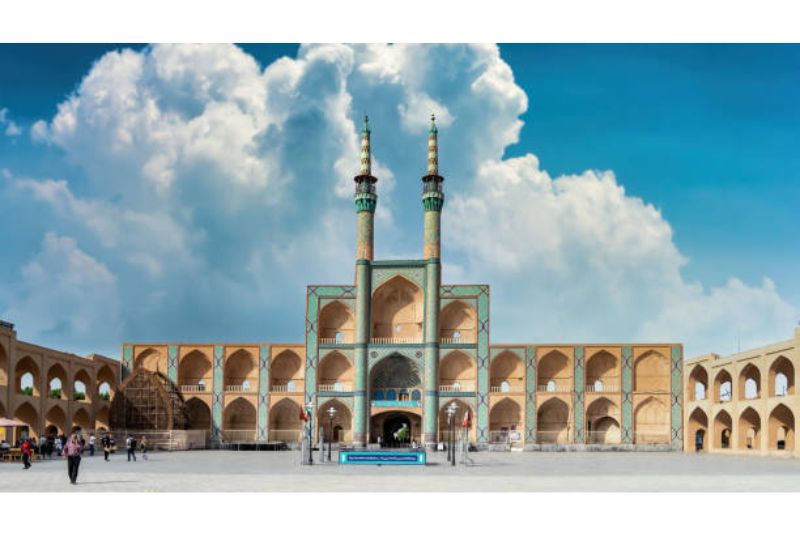
Jameh Mosque of Yazd is also named the Friday Mosque, which is a beautiful sample of Iranian architecture with the Azeri style. The mosque is crowned by a pair of minarets of 52 meters, the highest in Iran.
The mosque was built in the 12th century and it is still in use today. It was first built under Ala'oddoleh Garshasb of the Al-e Bouyeh Dynasty and later rebuilt largely between 1324 and 1365. The exquisite calligraphy and complex geometric patterns create a great view of the outside, while the interior part is full of honeycomb tiles, Kufic script, and plasterwork, all of which lead to the dreamy star-filled dome.
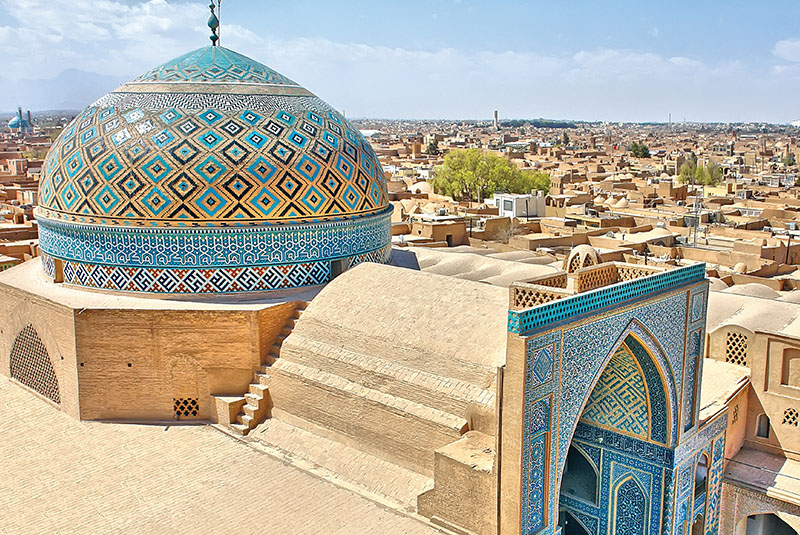
The mosque is well-known for being the oldest architecture of its kind, using indirect light in the mosque, and also extensive ceilings with astonishing decorations.
| Suggestion: Tehran Palaces | Iran's Historical & Cultural Heritage
7. Blue Mosque, Tabriz
Blue Mosque or the Turquoise of Islam is covered beautifully with blue tiles. The mosque was built in 1465 by the order of Jahan Shah, the ruler of the Qaraqouyunlu Dynasty and it suffered in a massive earthquake in 1779.
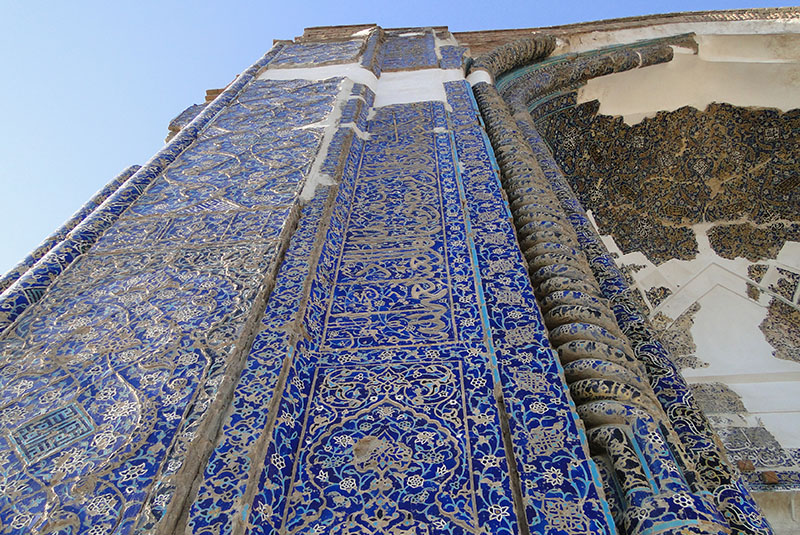
The Blue Mosque was a member of a larger architectural complex called the Mozafriya Collection. This collection consisted of a mosque, a monastery, a courtyard, a library, and other parts, all of which were destroyed, and of all the buildings, just the blue mosque remains.
8. Gohar Shad Mosque, Mashhad

The Gohar Shad Mosque is the largest and most beautiful mosque in the monument of the holy shrine of Imam Reza". It was built by the order of Empress Gohar Shad, wife of Shahrokh, the king of the Timurid Dynasty, in 1418 AD. Its courtyard with 2,850 square meters is the oldest one in this complex. The mosque is a classic mosque built in the form of four ivory mosques.
It has a dome with a height of 41 meters and 2 minarets with a height of 43 meters. Its azure dome creates a beautiful view in contrast to the golden dome of Imam Reza's holy shrine. This is one of the exceptional examples of Persian architecture for sure.
9. Agha Bozorg Mosque, Kashan
Kashan is mostly known and visited for Fin Garden, and historical houses. However, in the historical part of the city, there is a magnificent mosque called Agha Bozorg Mosque which has been described as "the finest Islamic complex in Kashan.

The mosque along with a school was built in the late 18th century by
| Learn more: Chak Chak Pilgrimage Site | A Cultural Gem in Central Iran
10. Vakil Mosque, Shiraz
Vakil Mosque is located on the western side of the entrance of Vakil Bazaar. The mosque was built during the Zand Dynasty between 1751 and 1773 and covers an area of 8,660 meters square. The mosque was constructed for public use.
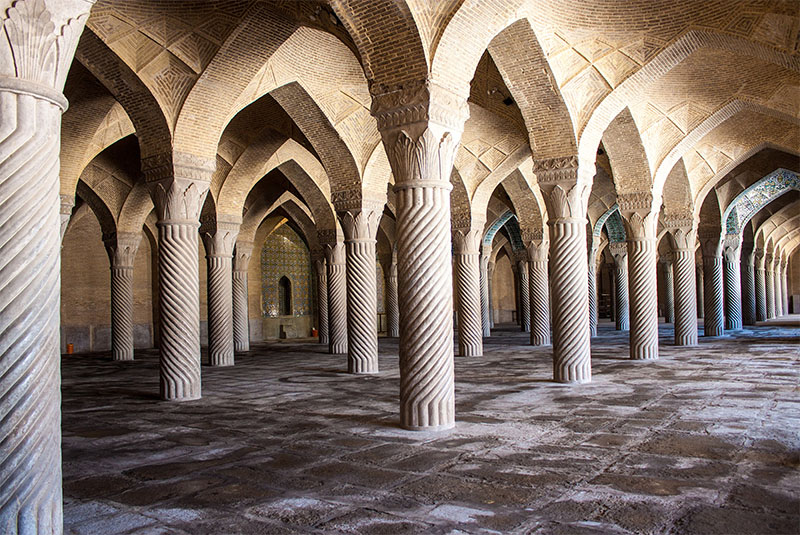
Unlike most of the mosques in Iran with four iwans, this mosque has only two iwans which are located on the northern and southern sides of a large court. The decoration of iwans is typical colorful polychrome tiles known as seven-colored tiles which are the symbol of art and architecture of Zand Dynasty in the 18th century. The Shabestan (prayer hall) covers an area of approximately 2,700 meters square with 48 monolithic pillars carved in spirals, each with a capital of acanthus leaves.
11. Jameh Mosque, Isfahan
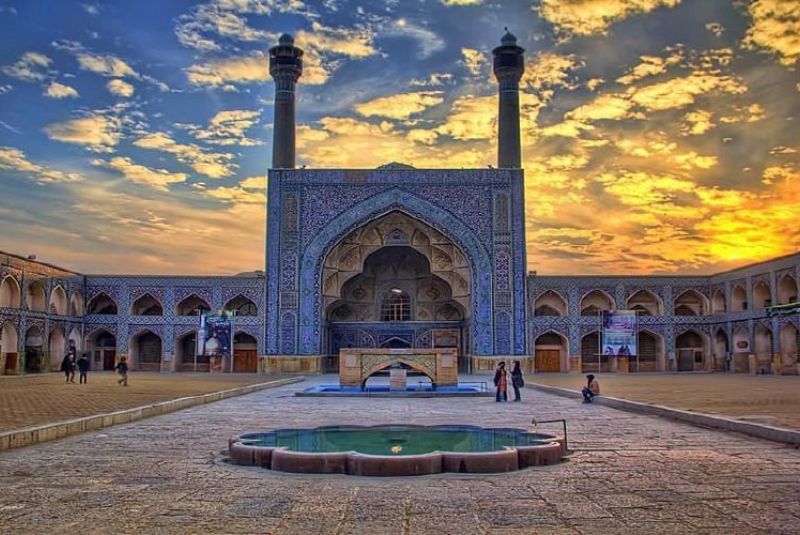
With a history spanning over 12 centuries, the Jameh Mosque in Isfahan stands as a testament to Iran's architectural evolution. Its gradual expansion over the years resulted in a harmonious blend of various styles. The mosque's colossal ivan, a monumental entrance, boasts intricate brickwork and stucco decorations that bear the influences of both Seljuk and Safavid periods. The ingenious use of geometric patterns, evident in the mesmerizing tilework and muqarnas, creates a symphony of the Islamic concept of Persian architecture that beautifully encapsulates the eras it represents.
| Discover: Iran's Ziggurats | Unveiling the Secrets of the Past
12. Imam Reza Shrine, Mashhad
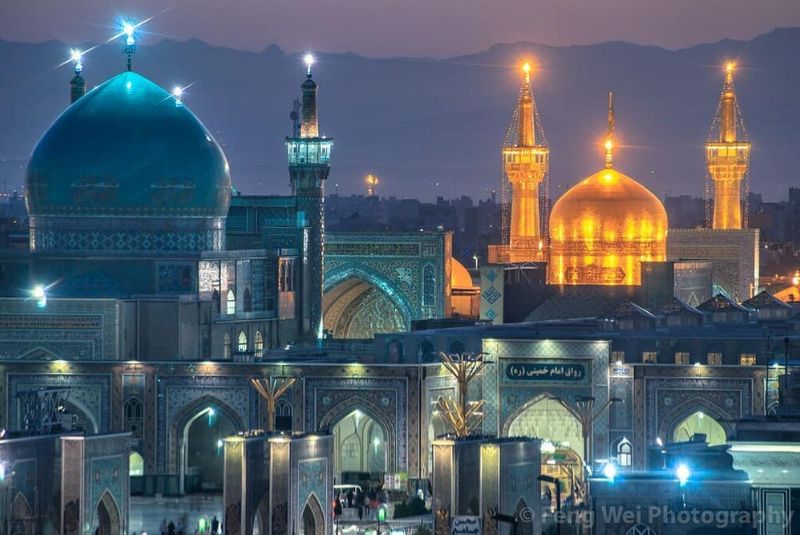
The Imam Reza Shrine in Mashhad, a prominent pilgrimage site, commands reverence with its grandiosity. The complex's extensive courtyards, minarets, and domes envelop visitors in a spiritual ambiance. The iconic golden dome of the main prayer hall gleams against the backdrop of blue tiles, serving as a beacon of devotion. Intricate Arabesque stucco, mesmerizing mirror work, and delicate calligraphy grace the interiors, immersing devotees in a sensory experience. This fusion of Islamic, Persian, and Central Asian influences heightens the shrine's spiritual aura and cultural significance.
13. Fatemeh Masumeh Shrine, Qom
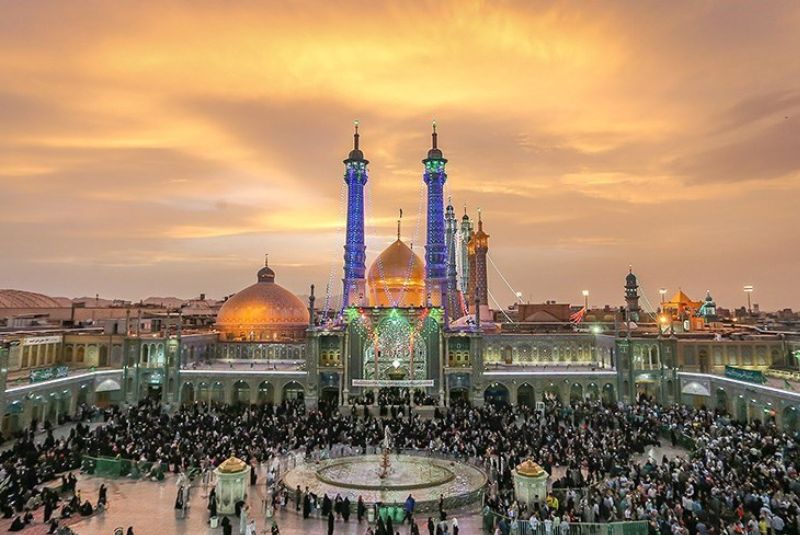
Dedicated to the sister of the eighth Imam, the Fatemeh Masumeh Shrine in Qom is a treasure trove of Persian architectural elegance. The complex's turquoise-tiled domes and minarets stand as artistic masterpieces. A tapestry of extensive mirror work, meticulously intricate tiles, and golden calligraphy adorns the interiors, reflecting both devotion and cultural opulence. These intricate details serve as a testament to the deep-rooted faith and artistic craftsmanship that converge within this sacred space.
14. Imam Mosque, Urmia

Built during the early 19th century, the Imam Mosque in Urmia emerges as a fascinating fusion of Ottoman and Iranian architectural elements. The mosque's minarets, bedecked in colorful tilework, evoke a sense of vibrancy and distinctiveness. The unconventional use of blue and turquoise hues further sets the mosque apart. This marriage of architectural influences, coupled with the mosque's unique color palette, contributes to its character as a remarkable intersection of cultures and design.
| Also might be interesting: Persian Griffin
15. Imamzadeh Ja'far, Qom
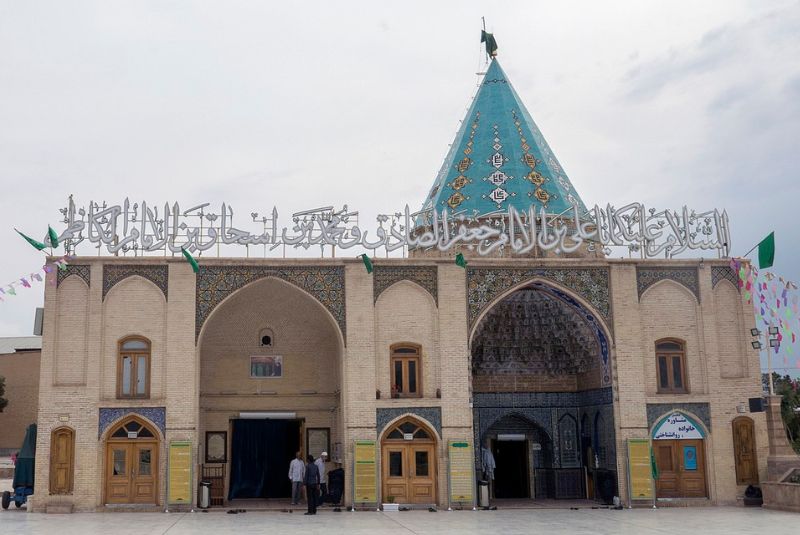
Imamzadeh Ja'far, nestled in Qom, draws the gaze with its resplendent golden dome and intricate mirror work. The fusion of architectural styles, including Persian and Islamic motifs, creates a visual symphony that captivates and resonates. Calligraphic inscriptions and meticulously detailed ornamentation underline the shrine's spiritual significance and historical importance. The interplay of light on the mirrored surfaces further elevates the atmosphere, inviting visitors to contemplate the union of divine devotion and artistic brilliance.
| Discover: Persian Empire; Facts & History of Achaemenids
16. Atiq Mosque, Shiraz
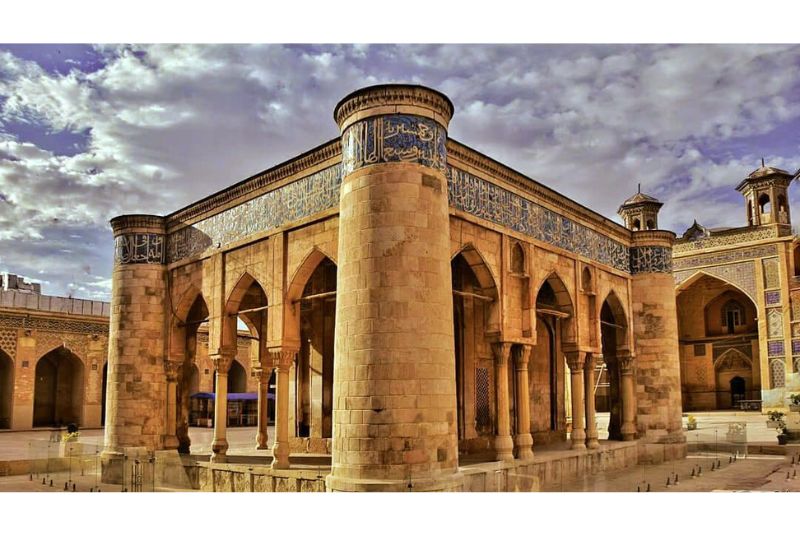
With origins that possibly trace back over a millennium, the Atiq Mosque in Shiraz serves as a living testament to Iran's deep historical roots. Its enduring Seljuk architectural characteristics are showcased through the mosque's brick minarets and central dome. The courtyard's blue-tiled basin, adorned with decorative motifs, carries echoes of the past, immersing visitors in the mosque's timelessness. As an architectural relic that has stood the test of time, the Atiq Mosque beckons with its ancient charm, inviting explorations of Iran's rich heritage.
Discover the most popular historical sites in Iran!
Top 10 Historical Sites of Iran
Bottom Line
Eager to experience Iran's mesmerizing beauty? Set out on a voyage to uncover these architectural marvels up close. Reach out to Eavar Travel Agency for remarkable tour packages and enjoy the captivating charm of Iran’s magnificent mosques and its multifaceted destinations.
Share your story!
Comment below and let us know about your Experience.
Your story inspires others!


Comment
Leave a Comment